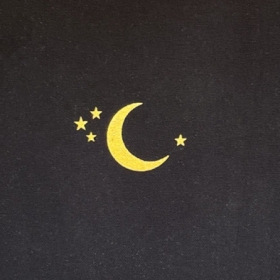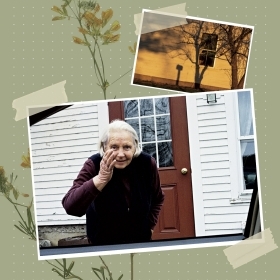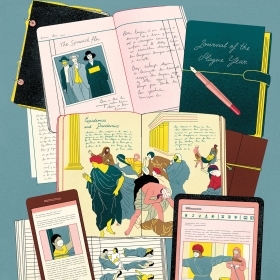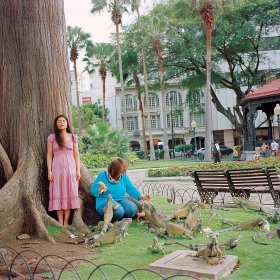In October 2020, our student assistant texted me a video from her grandmother’s house in rural Vermont: her hands opening the journal and flipping through the entire book, chock full of her small, neat handwriting, interspersed with dried leaves and flowers.

The evening of March 13, 2020, I dug out my journal from under a stack of books on my bedside table and made the first entry in over a year. “Today was the first day the Natick Public Schools were closed. Wellesley announced yesterday that today would be the last day of classes; classes move online on March 30,” I wrote. Normally, I used this journal to jot down funny things my kids said or their developmental milestones, but that day, I felt a strong need to record my experience of the pandemic.
Around that time, during the last days that the magazine staff were all still together in Green Hall, we asked our student assistant, Grace Ramsdell ’22, if she could keep a diary after she left campus. (We had an inkling that it might turn into a feature story.) One of my last in-person, non-grocery store purchases in 2020 was a journal for Grace that I bought at Calliope Paperie, a stationery shop around the corner from my house in Natick Center. In October 2020, Grace texted me a video from her grandmother’s house in rural Vermont: her hands opening the journal and flipping through the entire book, chock full of her small, neat handwriting, interspersed with dried leaves and flowers. This spring, she wrote an essay about her observations (“When Life Steps Almost Straight”). Illustrated with her photography, it’s a beautiful musing on time, place, repetition, and light during the pandemic.
We weren’t the only ones with diaries on our minds. As part of Professor of Anthropology Anastasia Karakasidou’s course Epidemics and Pandemics in the spring, she asked her students to keep journals in which they recorded the ways their families and communities were shaped by the pandemic—and connected those experiences to lessons from the class about outbreaks in the past. Sarah Ligon ’03 interviewed three students for her story about the course (“The Pandemic Diaries”); excerpts from their journals reveal the broad range of experiences of the crisis, as well as Wellesley students’ intelligence, sensitivity, and determination.
Our third feature story, “Latinx Photographers in Focus,” isn’t about diaries or the pandemic, but it is about the practice of capturing a moment in time. Sandra Riaño ’21 approached us this spring with a story she was interested in telling about Elizabeth Ferrer ’80, a writer and curator who specializes in a particular interest of Riaño’s, Latinx photography. Discovering Ferrer on a Zoom panel held by the Whitney Museum of American Art and then later finding out that she had attended Wellesley, too, was a “really magical, full-circle moment,” Riaño says. We are so pleased to share their conversation in this issue, and to include images from photographers in Ferrer’s recent book, Latinx Photography in the United States.
And finally, as you will see in numerous announcements in this issue and in your email inbox, as part of the WCAA’s effort to be more budget- and eco-conscious, we are embarking on a pilot program to make the print magazine opt-in for alums who graduated more than five years ago and less than 75 years ago (the classes of 1946–2016). If, like me, you enjoy receiving the magazine in your mailbox and displaying it on your coffee table, opt in at alum.wellesley.edu/sendmagazine. Otherwise, as always, you will have the option of reading the online version.
I hope that, however and wherever you are reading this, you and your loved ones are well. We’ll be in touch in the fall.
Lisa Scanlon Mogolov ’99, interim editor


